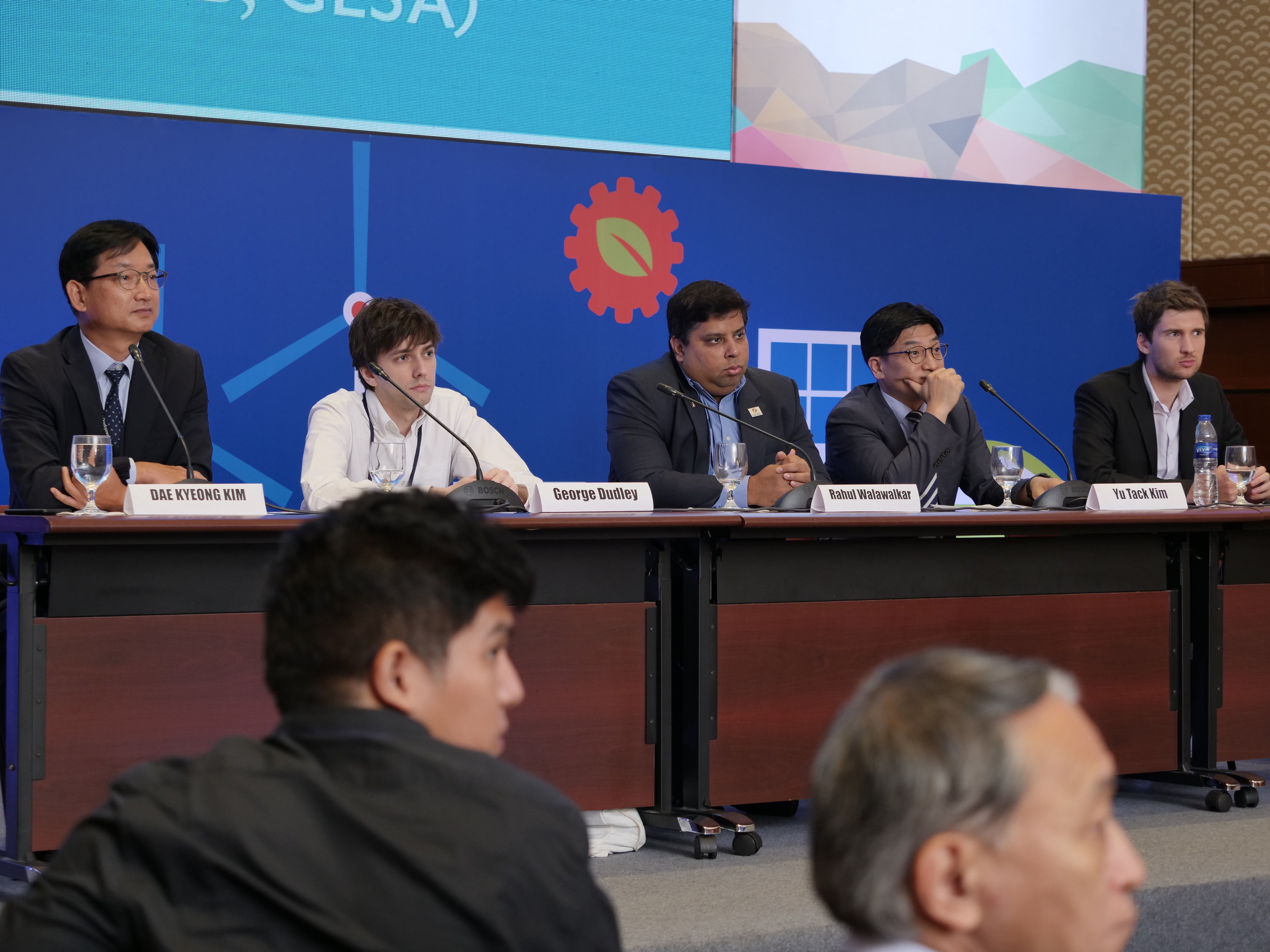In recent years, the value of energy storage has become increasingly clear, whether in behind-the-meter, ancillary services, renewable integration, or other applications. Yet when it comes to economic benefits, energy storage business models are still in an exploratory stage. There are still many questions to be answered. What direction can energy storage develop in in the future? How do we uncover energy storage’s potential? The author visited the 7th annual Energy Storage International Conference and Expo (ESIE 2018) to learn more about the future of energy storage in China.
According to statistics from the CNESA Global Energy Storage Project Database, as of the 2017 year’s end, China’s total operational energy storage capacity totaled 28.9GW, an increase of 19% from the previous year. Pumped hydro energy storage made up the majority of this capacity, at nearly 99%. Electrochemical energy storage capacity totaled 389.8MW, an increase of 45% from the previous year. In a comparison of new electrochemical energy storage capacity by applications, in 2017, behind-the-meter energy storage made up 59% of the total of new applications. Renewable integration came in second at 25% of the total new applications.
Energy Storage Provides New Energy with “Value-Added Services”
As the use of New Energy sources continues to increase, the energy structure faces a transformation. In the future, as solar, wind, hydro, and other New Energy sources occupy a major portion of China’s energy supply, energy storage will be an important part of the country’s entire energy industry. In recent years, China has promoted multi-energy systems, wind+storage/solar+storage, and other demonstration projects. Energy storage not only contributes to a more effective use of energy, decreasing wind and solar curtailment, it can also stabilize power generation, increase the quality of electric energy, and contribute to the balancing of grid loads.
Take solar PV as an example. In its earliest stages, the manufacturing costs for solar PV were high, and companies focused most of their efforts on lowering such production costs and technology R&D. With the maturation of the market and technological breakthroughs, solar energy manufacturing costs fell rapidly, bringing about opportunities for energy storage. Energy storage can help to improve the quality of PV electricity and ease pressure on the grid. Currently, there are many solar+storage projects in operation which help to prove through practice the value of energy storage in new energy grid integration.
Once such project is located in Shaanxi. In 2017, Shaanxi Province’s Dingbian County achieved a total installed PV capacity of 1500MW. In 2016, the county’s solar curtailment rate was near 10%. The 10MWh Dingbian Li-ion battery system’s load shifting program brought relief to the curtailment issue. The project utilized Dynavolt’s MW-scale container-style battery module technology. Operating in conjunction with the PV station, the battery absorbs excess power, activating based on PV power prices, providing load shifting services and contributing to use of local power.
Marketization is the Outlet for Energy Storage in the Grid
The five stages of the power system—generation, transmission, transformation, distribution, and end use—all can experience the value of energy storage.
In electricity generation, energy storage can participate in ancillary services such as frequency regulation and peak shifting. However, China’s ancillary services market is still in an exploratory stage, and questions such as proper pricing and transaction mechanisms have not yet been resolved. While some companies have implemented frequency regulation projects, many energy storage enterprises planning to join the ancillary services market are still waiting and watching the market from afar. At present, the most frequent approach to frequency regulation is through energy storage combined with thermal generators. As individual regions build their own ancillary services markets, energy storage in the form of peak shifting and frequency regulation has a strong chance at commercialization.
Amongst energy storage in ancillary services projects, Beijing Ray Power has created a combined energy storage and thermal generator system which functions as a new frequency regulation source that not only resolves the slow adjustment time, delays, and potential for errors of traditional thermal generators, but also removes the difficulty of adding frequency regulation to the grid due to energy (KWh) limits on energy storage. One example is the Jinneng Group’s 9MW solar-thermal power plant in Shanxi that links energy storage with frequency regulation. The system relies on a thermal generator coupled with a 9MW/4.5MWh energy storage system. The remodeled generator system has an improved AGC frequency regulation performance factor Kp of nearly 5.0. The energy storage system’s round cycle efficiency is nearly 88%, while the power plant’s AGC frequency regulation compensation helps create profit, bringing great benefit to the company.
The transmission and transformation side of electricity is unlikely to see energy storage applications in China. The size and relative staunchness of the Chinese power grid in comparison to those of other countries means that energy storage opportunities in China’s transmission and transformation will be unlikely for the next few years.
Power distribution, as many know, is one of the weaker components of China’s power system. One example is Guangdong, where numerous areas of the province have suffered from low voltage problems in distribution and transformation, leading to significant customer complaints. Such incidents brought energy storage into focus. However, according to insider information, the cost for a new energy storage system would be at least twice as much as that for transformer and line upgrades. Such costs are a difficult challenge for energy storage, but if over time the costs of energy storage batteries decreases, power distribution is certain to be a large market for energy storage.
Behind-the-meter energy storage made up the majority of 2017’s new energy storage capacity in China. No matter if used for load shifting or demand management, the value of behind-the-meter storage has already been proven. From the point of view of businesses, the most common profit point lies in energy arbitrage. Yet relying completely on arbitrage is not enough to bring out the complete value of energy storage. Even extremely low costs will not be enough to bring out the best regulatory functions of energy storage.
Narada Power’s smart energy storage power station at the Wuxi-Singapore Industrial park serves as a demonstration of energy storage capabilities. The station is powered at 20MW, and total capacity of 160MWh. The facility is currently the world’s largest commercialized energy storage power station in operation. Each day, the facility can provide the industrial park with 20,000KVA of load adjustment during peak periods, lowering the burden on the industrial park’s substations and transformers and eliminating the need for transformer upgrades.
Second-Life Usages for EV Batteries are Another Driving Force for Energy Storage


















































